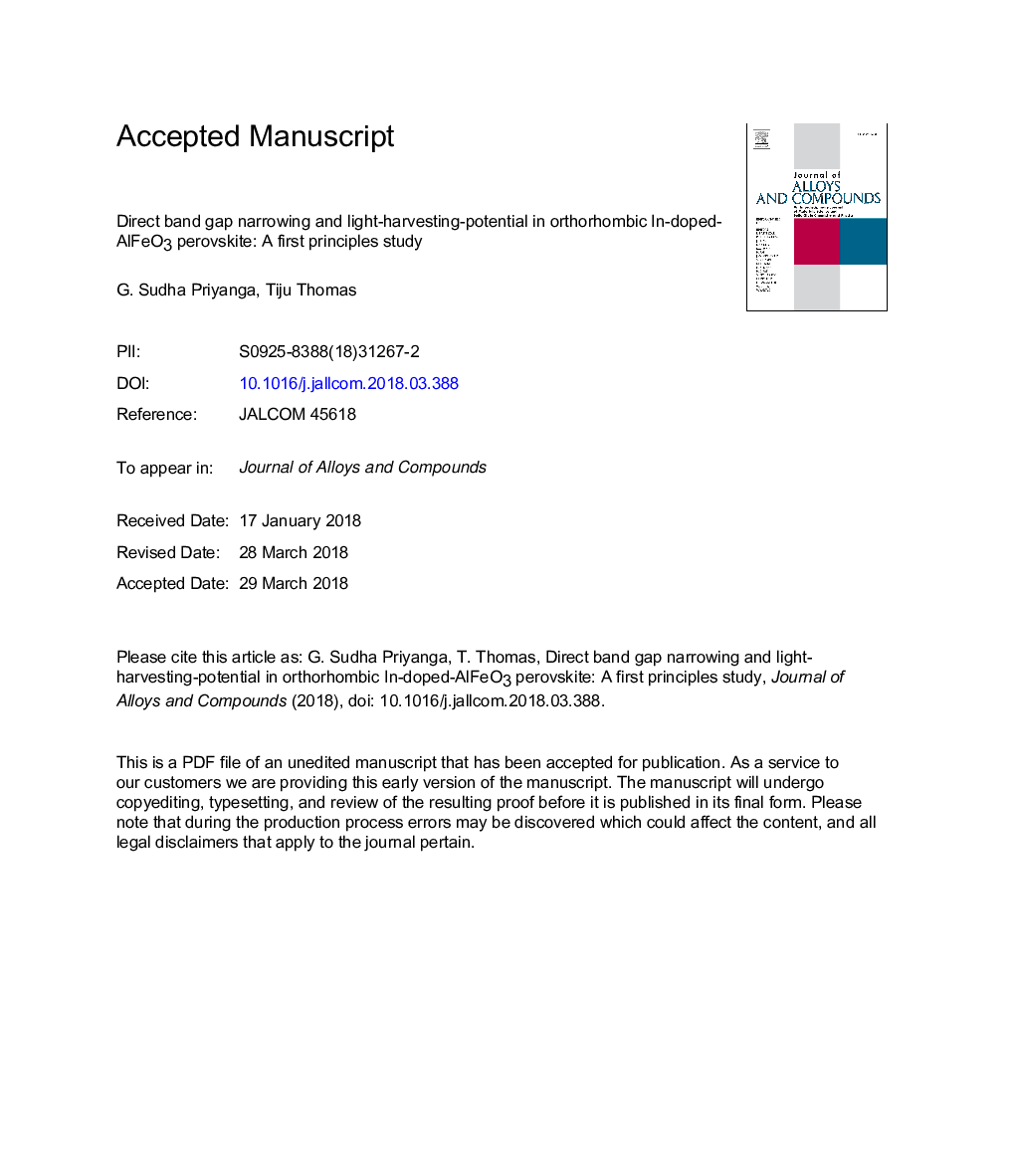| Article ID | Journal | Published Year | Pages | File Type |
|---|---|---|---|---|
| 7991819 | Journal of Alloys and Compounds | 2018 | 31 Pages |
Abstract
Enhancing the structural stability of AlFeO3 is relevant since one of the primary reasons for its lack of engineering appeal lies in the fact that the system shows polytypism. This means that the system would have structural transitions in operation. Hence enhancing the stability of a relevant phase becomes central to utilizing the AlFeO3 phase for device applications. Here the crystal structures and ground state properties of AlFeO3 and indium-doped-AlFeO3, i.e Al1-xInxFeO3 (xâ¯=â¯0.25, 0.5, 0.75) are studied using first principles calculations based on density functional theory. Computed ground state properties like equilibrium lattice constants and bulk modulus are in good agreement with the available experimental data. Interestingly In-doped orthorhombic AlFeO3 has higher stability when compared to the parent structure, indicating a simple chemical approach to stabilizing this structure (hence providing a method to avoid the usual polytypism related challenges). Band structures and density of states of these materials phases are reported and analyzed. The experimentally relevant outcomes of this work are: (i) doped compositions when tuned appropriately can show a direct band gap of â¼1.12â¯eV and hence is promising as an active material for a single junction device structure; (ii) in another composition window, a direct band gap of â¼2-2.30â¯eV is readily achievable (which is appropriate for water splitting applications). Hence we show that orthorhombic In-doped AlFeO3 is a stable and a promising non-toxic material for energy harvesting applications.
Keywords
Related Topics
Physical Sciences and Engineering
Materials Science
Metals and Alloys
Authors
G. Sudha Priyanga, Tiju Thomas,
